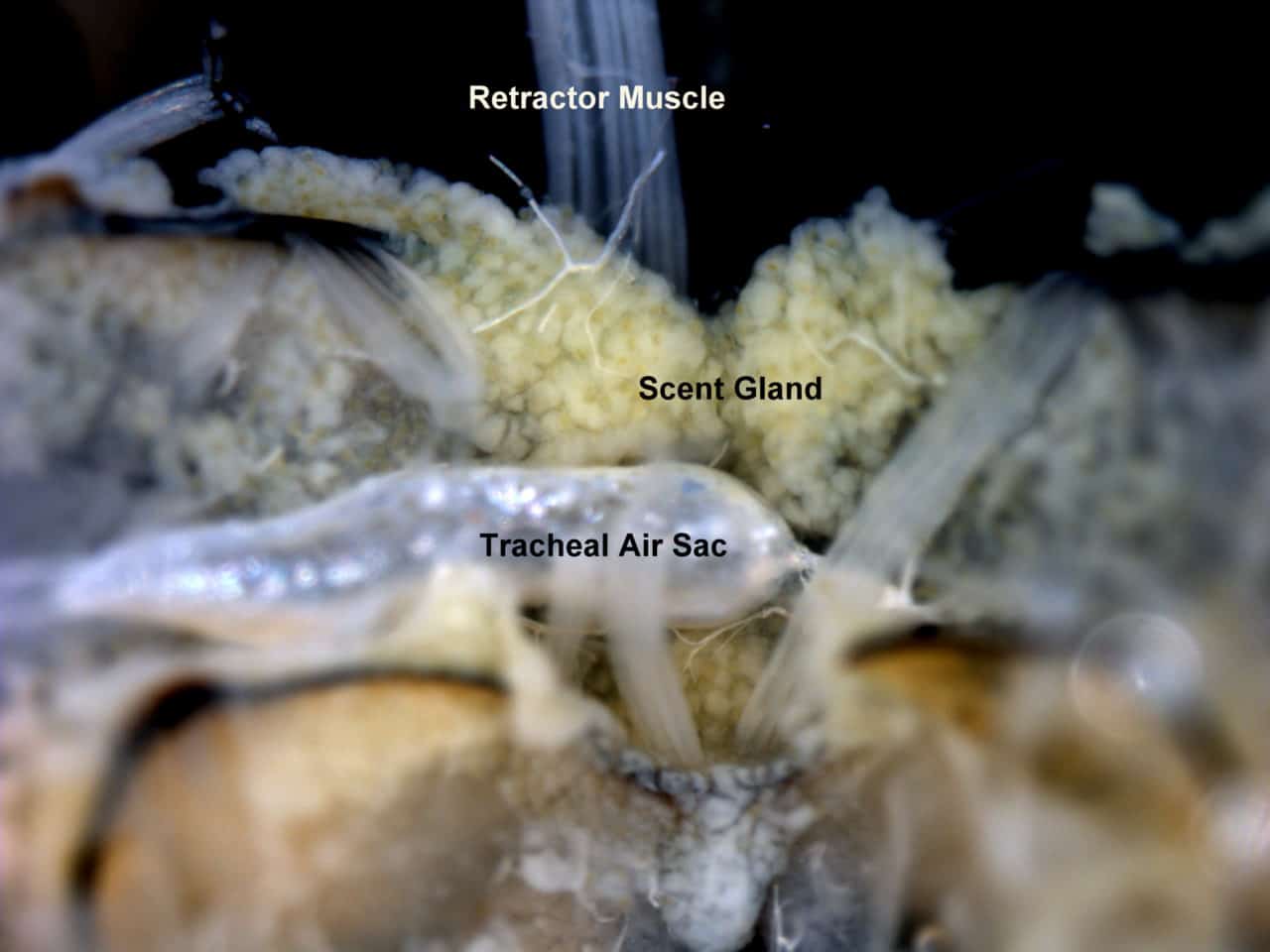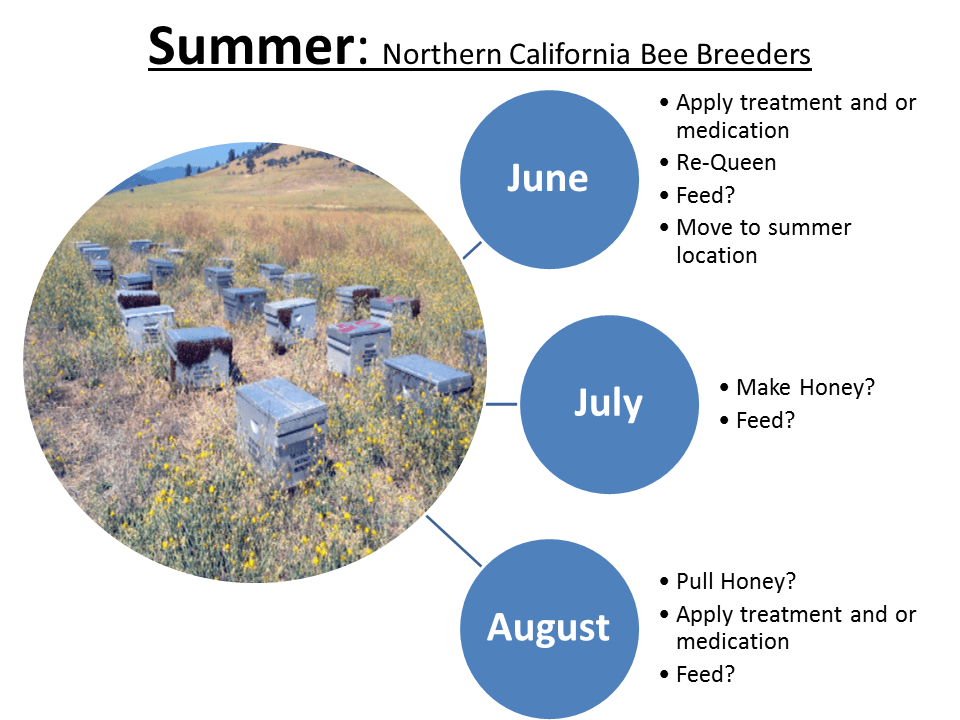The universal hive can be used to solve many everyday beekeeping challenges including how to maximize the potential and ultimately the production of a hive by means of increasing its worth through the diversification of its function. Beekeepers can be measured by their ability to act and react to an ever changing environment. They possess a working knowledge of bee biology and use experience, ingenuity, innovation, and common sense to manage their hives. Those that exercise the most applied and efficient management practices often reap the most benefits. Balancing practicality, efficiency, quantity, and quality is an art that can take a lifetime to master. An…
Author: Michael Andree
Image Collection
As honey bee researcher’s photos are used to document everything from locations and landscapes to sampling events and equipment to the condition of colonies, honey bees and/or related pests and pathogens. Recently, our Northern California Tech Transfer Team used images taken in the field to help confirm the diagnosis of a European Foulbrood outbreak in an almond orchard. Some of the images I take are good; some are ok but most are bad. From my experience hundreds of pictures yield but a few images worthy of sharing. We are currently in the process of putting together a collection of images that we hope to use…
Dissection Experiment
In December I was asked to visit our diagnostic lab at the University of Maryland to check on the status of a stereo-scope that will be utilized at the vanEngelsdorp Lab for a variety of applications related to honey bee research. The microscope was previously housed at our office in Oroville, CA (Butte County Cooperative Extension 2279B Del Oro Ave.) Because the scope was being under-utilized by members of our team the decision was made to ship it to the University of Maryland where it would be used for things like honey bee necropsies and tracheal mite testing by students and our diagnostic team. One…
Toyon
I am continuously impressed with the seemingly endless wealth of knowledge beekeepers accumulate over the years. Whether that knowledge is passed down from generation to generation, a product of their own curiosity, or a combination of both; a successful beekeeper, more often than not, possesses a fundamental knowledge of the topography of the land on which they keep their bees. Topography and climate generally go hand in hand and studying the distinctive characteristics of both can help to determine the most ideal places to locate your bee yards. The location of bee yards strongly influences management strategies, techniques, and decisions. For this reason beekeepers are…
Fall: Cycle of Northern California Bee Breeder
This is the final installment of a 3 piece blog that summarized a year in the life of a Northern California Bee Breeder. We are quickly approaching the end of October and beekeepers in the area are closer and closer to giving their bees a much needed rest. October and November are the culmination of a year’s work. It’s make or break time for most and what you have is what you got and hopefully what you will end up with at the start of the new year. There is no time for re-queening, no hope for a miraculous turn around, and nothing more to…
Summer: Cycle of Northern California Bee Breeder
The graphic above illustrates the basic cycle of beekeeping during the summer season in northern California. Things like applying treatments and feeding are management decisions based on what the bees are doing in response to the environment around them. Feeding and treating is operation specific and location dependent. Think of treatment windows in terms of hive dynamics with bee population being one of the most important. Hive populations go in cycles, rising in times where forage is abundant and falling at times when available forage tapers off. It is much easier to effectively treat a hive for Varroa and Nosema when bee populations are low…
Beekeeper Reports
It’s incredible how fast time can pass when you are enthralled in something new and exciting. I have been in California for more than a year and it seems like yesterday that I was standing in my parent’s driveway saying good bye to my mom, dad, and brothers as Rob and I loaded up his car for our move out west. A lot has happened in a year and making the move to the west coast has been one of the most eye opening experiences of my life. It’s been challenging, rewarding, frustrating, and fun but most importantly it’s given me the opportunity to grow…
State of Beekeeping in Northern CA:
I have been living in Northern CA for just over a year now and from what I’ve been told the weather in the past year has been atypical. Last spring and early summer was late and unusually wet which led to one of the best star thistle crops in years. Because of the rain the star thistle was able to out compete the grasshoppers and produce more than enough flowers to keep the bees busy. Most beekeepers in the area were able to make a surplus of honey and I think the abundance of available forage during the summer months may have helped curb pests…
Cycle of a Northern CA Bee Breeder
Most commercial beekeepers will tell you that beekeeping has changed dramatically in the last 30 years coinciding with the arrival of Varroa mites in the late 80’s. It seems as though things have been in a constant state of change since then as beekeepers and scientists scramble to understand the complexities of Varroa, viruses, Nosema ceranae, pesticides and how they interact with bees, both, alone and in combination. The days of setting bees down in a single location and letting them go until it was time to extract honey are far gone. Now, commercial beekeepers start to fall behind if they are not making their…
The Ropes of Research – Learning My Way Around a New World
When I think back to when I first started as an apiary technician at the Pennsylvania Department of Agriculture the first thing that comes to my mind is how completely clueless I was when it came to beekeeping. I also had a lot to learn about scientific research. The more I learned the more I realized how little I actually knew. An answer to one question almost always leads to another question... I will never forget my first day in the field at a yard just outside the small town of Lewisburg, Pennsylvania. Dennis vanEngelsdorp and I met Jeff Pettis and Nathan Rice (USDA Bee…

